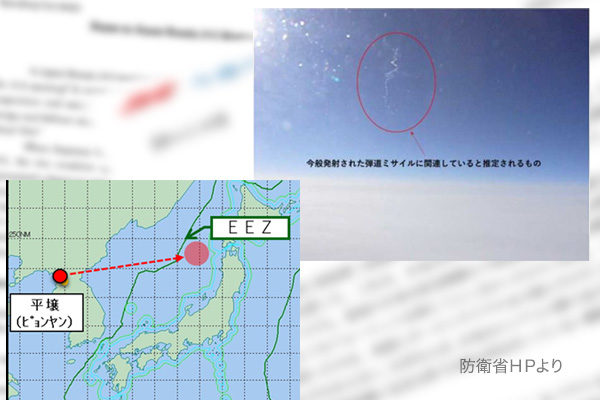On March 24, North Korea test-fired an intercontinental ballistic missile. Given its reported maximum altitude and other data, the ICBM, if launched on a normal trajectory, may reach the U.S. East Coast where Washington and New York locate. Many Japanese discuss that the test was dangerous because the missile’s landing point was close to Japan. But the most important point regarding the latest test is whether North Korea has acquired technology for an ICBM warhead’s reentry into the atmosphere.
At issue is technology for atmospheric reentry
In its annual white paper published in July 2021, the Japanese Ministry of Defense said, “North Korea is considered to have already miniaturized nuclear weapons to fit ballistic missile warheads and possess the capability to launch an attack on Japan with a ballistic missile fitted with a nuclear warhead.” But it noted that “it is considered necessary for the operationalization of long-range ballistic missiles to further verify technology for protecting the reentry vehicle from the ultrahigh temperature that is generated during the atmospheric reentry of the warhead part.” Thus, the ministry then regarded North Korea had not acquired the atmospheric reentry technology for ICBMs reaching the U.S. mainland.
This assumption was chiefly based on the fact that the warhead of the Hwasong-15 ICBM test-fired in November 2017 broke into three pieces due to the ultrahigh temperature and air resistance when it reentered the atmosphere.
Therefore, the point we should pay attention most this time is whether the warhead successfully reentered the atmosphere. Informed sources say that the warhead did not break into pieces after its reentry into the atmosphere, at the very least. We are waiting for authorities’ assessment on whether North Korea has acquired the reentry technology, apparently the last major obstacle to complete its capabilities to launch nuclear attacks on the U.S. mainland. Undoubtedly, however, North Korea has been achieving technological progress every moment.
Japan should consider its own nuclear deterrence
The white paper said Japan would respond to the threat of nuclear attack with “U.S. extended deterrence with nuclear deterrence at its core” and “its own efforts.” If North Korea has capabilities to launch nuclear attacks on the U.S. mainland, however, U.S. deterrence may weaken. In this respect, the paper made the following comment:
“Should North Korea make further progress in the development of ballistic missiles, including the acquiring of reentry technologies, it may come to have a one-sided understanding that it has secured a strategic deterrence against the United States. However, if North Korea has such a false sense of confidence and recognition regarding its deterrence, it could lead to an increase and escalation of military provocations by North Korea in the region and could create situations that are deeply worrying also for Japan.”
North Korea has acquired or come close to acquiring capabilities to directly attack the U.S. mainland with nuclear weapons. I would like to emphasize that the time has come for Japanese people to consider seriously deploying U.S. intermediate-range nuclear missiles in Japan or possessing Japan’s own nuclear deterrence.
Tsutomu Nishioka is a senior fellow and a Planning Committee member at the Japan Institute for National Fundamentals and a visiting professor at Reitaku University. He covers South and North Koreas.


